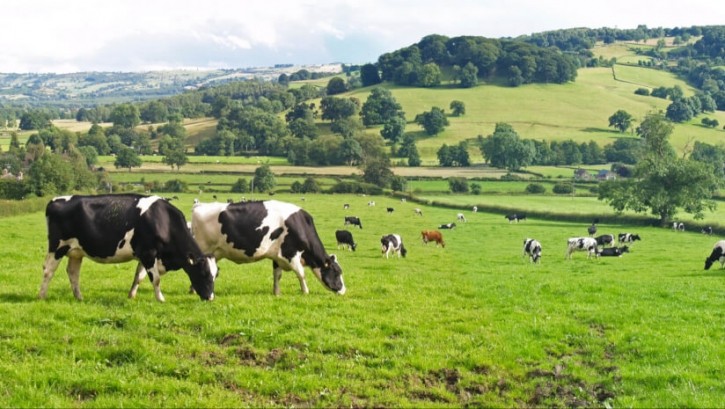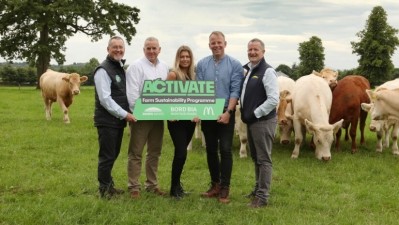Long read
How can soil carbon help your business reach net zero?

Sustainability and the drive to net zero are rapidly becoming critical elements to dairy business strategies, but figuring out how to get there can be challenging.
Alongside reducing emissions, one of the key elements that can help is sequestering carbon in soil – which in some cases is already helping farmer suppliers to achieve net zero.
Why is this important?
Sustainability is important, from its widest sense right down to the narrowest interpretation. Businesses need to be financially sustainable, as well as environmentally and socially sustainable, if they are to survive and thrive in the future.
Government, consumers and partners throughout the supply chain are all demanding sustainable practices, and with it the transparency and robust reporting required to avoid any hint of greenwashing.
“Government policy is moving in the direction of full supply chain carbon reporting, so it’s important that processors and their farmer suppliers get ahead of the curve,” explained Harry Kamilaris senior business development consultant from soil carbon measurement company, Agricarbon. “In the dairy sector, there’s a lot that processors can do to reduce direct emissions – from using renewable energy and fuels to more efficient operations.”
But the vast majority of emissions happen at farm level, so how can the supply chain work together to tackle this? On the one hand, incentives can be offered to reduce emissions – but that only considers one side of the equation. The other, equally important, element is sequestering carbon – and farmers are in a unique position to help here.
“Although trees are often hailed as the answer to carbon sequestration, soil actually has a far greater potential to capture and store carbon.
“There’s more carbon in the top 30cm of the world’s soil than in all the world’s forests combined. And by adopting regenerative farming practices, producers can continue to produce healthy, nutritious food while improving their soil health and tackling climate change.”
How to integrate soil carbon into your net zero strategy
The Science-Based Target Initiative (SBTi) categorises emissions into three scopes:
- Scope 1 – direct
- Scope 2 – indirect
- Scope 3 – those that occur in the value chain of the reporting company
Organisations must achieve net zero by reducing emissions in all these areas, which requires a complete greenhouse gas (GHG) inventory of each scope.
When it comes to the dairy supply chain, processors will need to work with their own key stakeholders, including farmers, to calculate and reduce emissions. They will likely need to engage with consultants and specialist advisers in this area, including farm carbon footprint experts.
Step one: Establish a baseline measurement – data is key
When it comes to carbon sequestration in soil, there’s little point in setting targets until a baseline is in place, as any progress made will be unmeasured and therefore lost. Then improvements can be objectively measured.
Measuring soil carbon is slightly trickier than measuring emissions, as the whole process must be pin-point accurate. Just a 1% increase in soil carbon, taken over a whole farm, can equate to hundreds of tonnes of carbon.
Step two: Ensure robust reporting
For reporting purposes, Kamilaris noted that accuracy and repeatability is essential.
“That’s why Agricarbon has developed a robust system of soil sampling, analysis and reporting, which enables producers to measure and monitor their soil carbon stocks. Sampling strategies are designed according to the project requirements, and overlayed with soil maps and topography, to ensure samples are statistically representative.”
Trained field operators then take GPS-tagged soil cores up to 1m deep, which are analysed at an ISO-accredited laboratory in Dundee.
“We use efficient robotic analysis to reduce cost and maximise sensitivity, looking at soil organic carbon and bulk density, to produce a simple but detailed report.”
Step three: Work with consultants to identify ways to achieve net zero
Once the baseline measurement is in place, farmers can then work with regenerative farming consultants to identify the best way to reduce emissions and sequester soil carbon. Modelling can predict the likely improvement in carbon footprint, which helps processors to forecast for their business ESG goals, but re-testing the soil after 5 years will provide a robust and statistically reliable measurement on which farmers – and the wider supply chain – can report.
How can I encourage farmer suppliers to adopt these measures?
It’s easy to view the road to net zero as a cost to any business – but in farming there are multiple wins.
“Improving efficiencies and reducing input use has a direct impact on the financial bottom line,” continued Kamilaris. “And adopting regenerative farming methods is all about improving soil health, which is directly correlated with its resilience against extreme weather events – which are likely to occur more in the future – and productivity. Healthy soils are the foundation of healthy, profitable farm businesses.”
Although clearly there’s a cost to undertaking the measurements, the return on investment can be considerable, particularly compared to the cost of missing the environmental targets set or having to purchase carbon credits.
“When undertaken at scale – for example across a supplier base – it is particularly cost-effective, and many milk processors have already funded the baseline measurements for their farmer suppliers.”
What’s the likely return on investment?
Farmers sequestering 3t/ha of carbon over 5 years can save an estimated 11.01t/ha CO2e.
“Multiply that across your farmer supply base and you’ll see it soon adds up to significant CO2e reductions – all of which reduces the need to buy expensive carbon credits as an offset.”
What about compliance with monitoring, reporting and verification (MRV) legislation?
The SBTi framework allows businesses to set credible, verifiable targets which are informed by the current understanding of the effect of global economic activity on climate change.
The Greenhouse Gas Protocol’s Land Sector and Removals Guidance explains how companies should account for and report emissions and sequestration. Business will be encouraged to measure and track any carbon sinks – and, clearly, they cannot do this without accurate data.
“Agricarbon aligns its current methods with all known soil carbon MRV protocols that include direct measurement.”
The three most commonly used in Europe are: FAO-GSOC, GHG Protocol LS&R Guidance, and VM0042. Such protocols are required to produce verified carbon credits for the voluntary carbon market and underpin the integrity of carbon removals claims for internal carbon reporting and scope three carbon removals.
First Milk case study
Making definite steps towards net zero is business-critical, and First Milk was among the first dairy processors to start working with its farmer members with this aim.
“To achieve net zero we have to reduce emissions, as well as sequestering carbon,” said First Milk’s chief impact officer Mark Brooking. “But we need to have a baseline to work from.”
In 2021, Agricarbon took 120,000+ soil samples from more than 120 of First Milk’s members’ farms.
“When you start collecting the data it’s amazing – excluding woodland we have 100,000 trees on our farms and 4,300km of hedges – and we’re only small, supplying 6% of the UK’s milk,” added Brooking. “A change in management practices to these farms can influence not only carbon sequestration but also biodiversity.”
The co-operative has a target to sequester 100,000t of CO2 by 2025, and work done so far suggests that its farmers have already achieved that.
“But we need to ground [it in] truth it to prove that beyond reasonable doubt,” pointed out Brooking.
Once the baseline measurement was in place, members were asked to record what they’re doing on each field, including plant diversity and how they’re grazing it, to increase soil organic matter and carbon. The fields will be re-tested after 3-5 years to see what changes have come about, and farmers are being rewarded for their actions through a milk price bonus.
“Organic matter is hugely important – exudates from plant roots get carbon deeper in the soil and keep it there for good,” noted Brooking. “And it’s important that farmers aren’t seeing productivity losses as a result – instead they’re reducing input costs and improving resilience.”
It’s important not to only focus on carbon – biodiversity, environmental sustainability, and profitable food production are equally important.
“We can’t eat carbon and we can’t eat trees. But customers are looking for solutions in order to give people permission to continue to enjoy dairy produce.”
Buying carbon credits from far-flung parts of the world does not have the credibility of tackling your own supply chain, he added.
“Everything we do have to be credible and backed by science.”
Several of First Milk’s customers, like Nestle and Yeo Valley Production, have been very supportive of the move.
“We recognise the dairy industry is under attack with regard to methane emissions, so were almost putting pressure on ourselves,” he continued. “It’s better to take the lead rather than wait for regulation.”
It’s also important to engage farmers in a positive way – without their support the supply chain won’t see the carbon reductions it needs, Brooking warned.
“When talking to farmers we don’t talk about sequestration, we talk about increasing the output and resilience at farm level. By changing from set stocking to rotational grazing they’ll get more grass – carbon sequestration is just a by-product of that. And we’ve had fantastic backing from our farmers – without the interventions they’re putting in place then nothing would change.”
In related news, Glebe Farm claims its PureOaty Barista product touts the lowest carbon footprint among oat drinks on UK market.
















